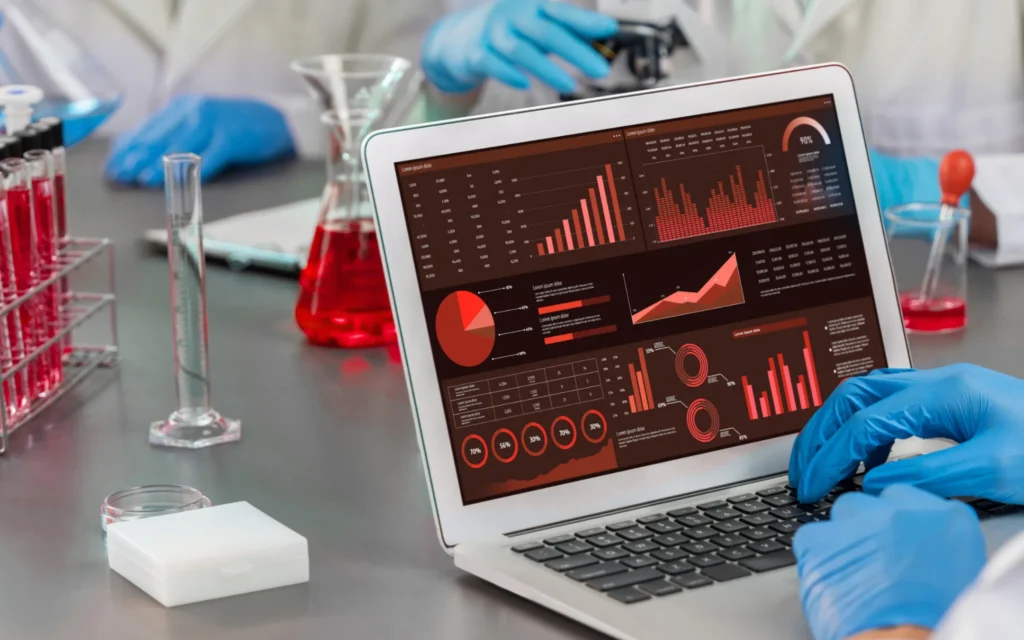Which Engagement Model Should You Choose When Considering a Software Vendor?

May 7, 2025 10 min read
Navigating software vendor engagement models: time & material, dedicated team, and fixed price explained.
Cutting the cost without having to sacrifice the quality, finding a partner that understands your needs and can contribute to the problem-solving process, or how about trying to beat the competition and come up with the best proposition for potential clients – as you can see much effort goes into pairing the right client and project with the right vendor.
Just like with any ongoing relationship or any partnership, it’s a two-sided job where it’s not enough for a customer to hand the vendor the list of requirements or for the outsourcing partner to have the same customer engagement model for all clients. And what guarantees the beginning of this beautiful friendship is a suitable customer engagement model that works for both parties. Read on as we try to cover the most common project engagement and customer journey models and help you choose the one that better suits your case.
What Are Customer Engagement Models?
Customer engagement models serve as a basis for future client-vendor customer relationships too. Are customer engagement models important? It’s a framework a company chooses to manage their customers that serves as a basis for future collaboration between a client and a software vendor that ensures the customer retention some control, responsibility, or flexibility.
Just like there’s no such thing as a universal client, there’s no one way of collaborating with prospective customers. Choosing the appropriate stages of customer engagement models for software development is the primary task to align goals around an expected outcome and the best suitable pricing model.
The decision to choose this or that hybrid engagement model can be based on various factors that might be objective, like the maturity level of the vendor and their track record of customer success before, or subjective, like the customer’s previous experiences with other hybrid models and service providers.
Either way, with all its legal and technological aspects, the selected holistic engagement model should be precisely specified and transparent for both parties. Here’s our brief overview and discussion of the most popular models of software engagement: Time and Material, Dedicated Team, and Fixed Price.
Time and Material Customer Engagement Model
A cost-effective model or hybrid approach where the amount of money you spend corresponds to the amount of work delivered. The client and the vendor usually agree on hourly, daily, or weekly rates for the allocated project resources.
This stage of the customer engagement model is often preferred because it offers flexibility to change requirements, balance project resources, and spread the workload. Provided that experienced and skilled project managers accompany Time & Material project, quality is appropriately supervised. Progress and the observance of the deadline are addressed. There are good chances of getting the work done in time and within the budget.
Choosing the Time and Material model usually minimizes the most significant risks of outsourced projects: software you’ve been delivered fails to satisfy any of your needs because you need more control over the scope and the budget spending.
With Time and Material, bugs are caught in the early stages of the project; the cost is thoroughly estimated with the sequence of iterations due to Agile methodology. Furthermore, the client can always ensure that the project meets market needs validating it before it’s too late to change anything.
Choose Time and Material Engagement Model When:
Understanding when to opt for a Time & Material customer engagement model can be crucial for the success of increasing customer engagement in your brand loyalty project. This model is particularly suitable when you anticipate changes and require flexibility.
- You have constantly evolving or unclear requirements
- It is a large project with numerous iterations planned
- Your development needs will deviate over the time
- You appreciate transparency in customer-vendor relationships
The Time and Material customer engagement model is ideal for projects that require adaptability and transparency, ensuring that changes can be made efficiently and effectively.
Dedicated Team
A project customer engagement strategy model with a dedicated team means an extension of the client’s team with the offshore, nearshore, or onshore vendors’ specialists. In contrast, the other project sales team members are retained on the client’s side. The specialists your firm is supplemented with are supposed to comply entirely with your company’s existing corporate culture, rules, and best practices.
Moreover, this new team takes over your company’s customer engagement models, critical technical resources, tools, and methodologies. They should be expected to recognize themselves as essential to the organization. This customer engagement model may have productive variations when it is ‘injected’ with the Time and Material (T&M) elements high touch onboarding model.
You are sure that you will need a software engineer of a precise qualification category somewhere down the project progress line, but you are not sure when precisely and for what period. In such a situation, the vendor can provide the required resources at the right time and on favorable T&M terms.
The most straightforward approach to enhance customer experience and engagement will work well for long-standing customer relationships and long-term projects. However, it requires vast managerial experience and extensive technology background, mainly on the part of the client’s team.
The supplier typically takes a big deal of responsibility above the whole for customer satisfaction, lifetime value and dedicated team performance with due consideration to the motivation aspect. Working out reward programs, making a positive work environment, encouraging personal advancement, and other similar initiatives will increase the project performance rate.
Choose a dedicated team engagement model when:
The Dedicated Team customer engagement model is an excellent choice when extending your in-house customer acquisition team with external expertise. This automated engagement model fosters collaboration and knowledge sharing.
- When you need more workforce for the in-house development team
- When you are fond of cross-border knowledge sharing and bringing in outside minds
- When you have a fair vision of how your project should evolve and have enough time and resources to keep abreast of all the management aspects.
The Dedicated Team customer engagement model is perfect for those who value collaboration and need additional resources to complement their in-house team engaged customer side.
Fixed Price Low Touch Engagement Model
Fixing the price is about improving the scope, project requirements, and deadlines. This low-touch engagement model will only work with thorough initial planning, estimation, and analysis sessions. The more planning you do, the better the outcome.
Why is the planning stage so important? The success of the fixed price project and correlated engagement models are directly proportional to driving ongoing customer success due to the success of this initial phase. The slightest change in the scope can turn into endless negotiations between the parties, negatively impacting a product’s time-to-market.
The main benefit of selecting this particular engagement model is a predefined and fixed project budget, which means you know exactly how much you will spend on your product. Still, the cost may vary widely because of the minor changes in the scope. The engagement model might be slightly transformed with a milestones & deliverables approach to better control a more significant project. A client is billed as the agreed milestones are reached and deliverables are in place.
After that, another stage with its milestones and deliverables will begin. With minimized risks, you’ll have a better vision of project needs and terms. On top of that, you’ll be able to define the next set of deliverables more clearly. The discovery phase serves as the starting point for most successful fixed-price projects.
Determining the desired outcome, understanding the requirements and the scope should ideally be further transformed into Minimum Viable Product (MVP). Under such a scenario, discovering the project’s needs is an excellent remedy for unrealistic expectations.
Choose Fixed Price Customer Engagement Model When:
The Fixed Price customer success manager engagement model is a great choice when your project requirements are well-defined and unlikely to change. This model gives customer success managers a clear budget and timeline.
- Requirements are clear, well-defined, and unlikely to change
- You deal with small or medium projects which won’t last for more than a few months
- You used to outsource similar projects before
Whatever customer engagement process and model you are considering, look at the development project from a long perspective. The possible outcome might bring new opportunities even if you are sure it will take up to two weeks. The reputable vendor and win-win attitude of customers and engaged customers, by both parties are the most significant success factors under all the customer engagement models and conditions.
A Guide to Choosing the Right Engagement Model
Navigating the world of customer engagement models can be complex, but with the right approach, you can find the perfect fit right customer engagement model for your project.
- Identify Your Requirements. Start by clearly defining your project requirements. Understand the scope of your project, the expected deliverables, and the timeline.
- Evaluate Your Flexibility. Consider how likely you require to change over the course of the project. If your project is large and likely to evolve, a Time & Material model may be best. If your requirements are precise and unlikely to change, a Fixed Price model could be more suitable.
- Assess Your Resources. Look at your in-house team and evaluate whether you need an additional workforce. A Dedicated Team model might be the best fit if you need more hands on deck.
- Consider Your Experience. If you’ve outsourced similar projects before, you might be more comfortable with a Fixed Price model. A Time & Material or Dedicated Team model might offer more flexibility and support if this is your first time outsourcing.
- Long-Term Perspective. Always look at the development project from a long-term perspective. Even if the task seems short, the outcome might bring new opportunities.
- Choose a Reputable Vendor. Finally, ensure you choose a reputable vendor who understands your needs and can contribute effectively to problem-solving.
The suitable customer engagement model is the one that aligns with your project’s needs, your team’s capabilities, customer feedback, and your long-term goals drive customer success. Clear communication, flexibility, and mutual understanding are critical to a successful partnership.
Final Remarks
Choosing the suitable customer engagement model is a crucial step in ensuring the success of your software development project. It’s about balancing cost, quality, and flexibility that suit your needs and circumstances. Remember, there’s no one-size-fits-all solution – the best customer relationship model for you depends on your project’s requirements, resources, and long-term goals.
We understand that every project is unique and are committed to providing personalized solutions that drive success and retain customers.
Contact us today to start your journey toward a successful software development project with the proper customer engagement model.



